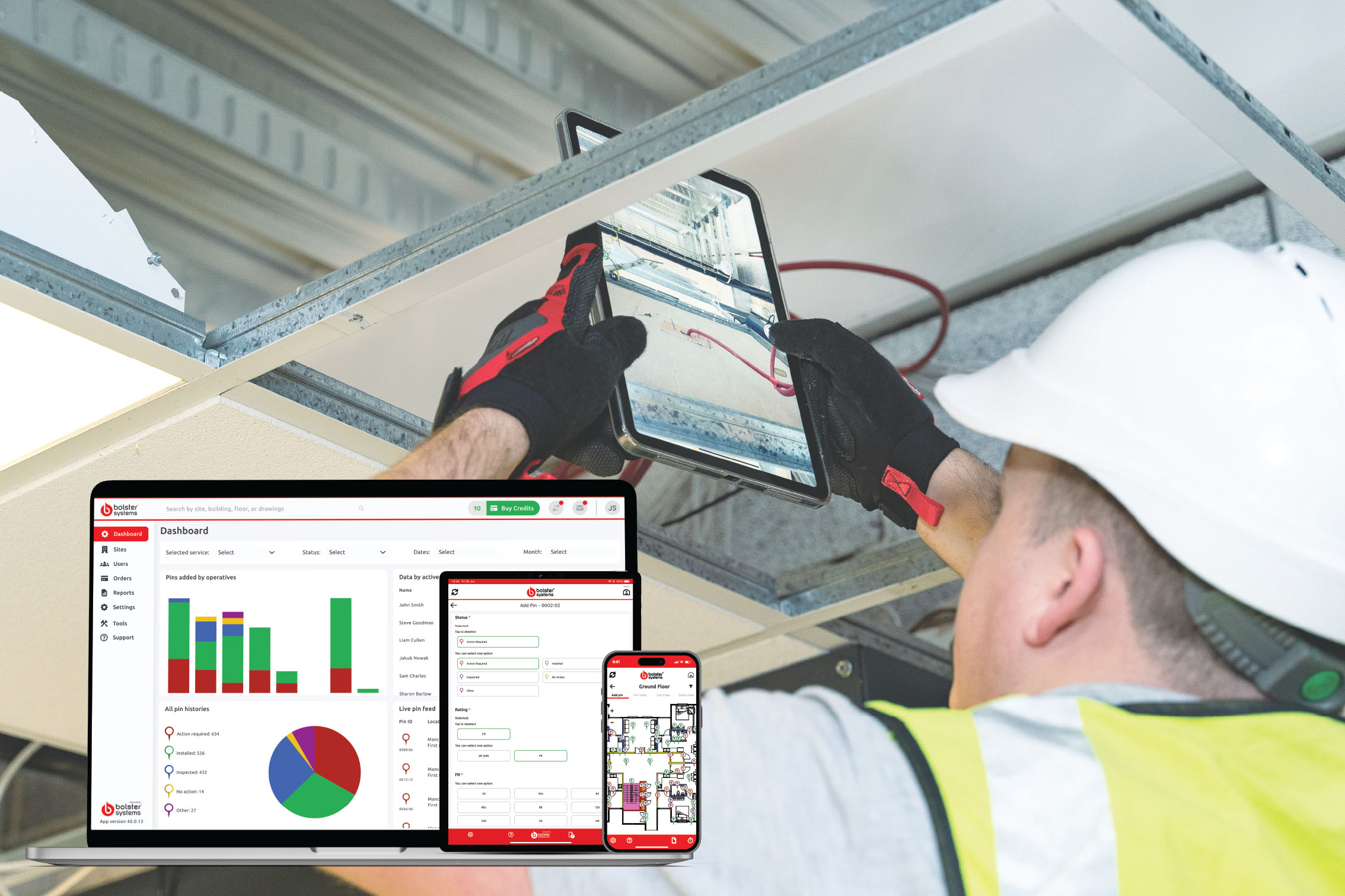Digital Transformation in UK Fire Safety & why 2025 is the Year to Modernise

In the UK, the fire and building compliance sector is experiencing a digital revolution, driven by the need for greater efficiency, accuracy, and accountability. As we move through 2025, the adoption of technology in fire safety management is no longer optional—it’s essential. For property managers, contractors, and compliance professionals, the digital transformation presents an unparalleled opportunity to improve safety outcomes while navigating an increasingly complex regulatory environment.
One of the key drivers of this shift is the Building Safety Act 2022, which introduced stricter requirements for managing and documenting fire safety measures. With large volumes of data required for compliance—such as records of fire door inspections, fire-stopping measures, and evacuation plans—manual methods of record-keeping are proving inadequate. Digital platforms like Bolster Systems are stepping in to fill this gap. These tools centralize compliance data, enabling seamless collaboration between stakeholders and ensuring that critical information is always accessible when needed.
The rise of Building Information Modelling (BIM) is another game-changer for fire safety in the UK. BIM allows for the creation of detailed digital twins of buildings, providing a comprehensive overview of fire safety features. This technology is particularly useful in large or complex developments, where visualizing fire safety systems in a 3D environment helps identify potential risks and streamline compliance workflows. In 2025, BIM adoption is expected to increase as more developers recognize its value in meeting regulatory requirements and optimizing fire safety design.
IoT-enabled fire safety solutions are becoming more prevalent in the UK, especially in high-risk sectors such as healthcare, education, and social housing. Smart fire alarms, sprinkler systems, and heat detectors now provide real-time monitoring, delivering instant alerts and data insights. For example, IoT systems can detect faults in fire alarms or blocked sprinkler systems and notify maintenance teams immediately, reducing downtime and ensuring compliance with UK fire safety standards.
Data security is also a growing concern as fire safety systems become more interconnected. Regulations such as GDPR and the Cyber Essentials certification highlight the importance of safeguarding digital records. For fire compliance professionals, this means implementing robust cybersecurity measures to protect sensitive data while leveraging the benefits of digital tools.
The cost-saving potential of digital transformation cannot be overlooked. Automated workflows and real-time monitoring reduce the administrative burden on compliance teams and minimize the risk of human error. Additionally, digital systems enable predictive maintenance, identifying potential issues before they become expensive problems. These efficiencies translate to significant cost savings for property owners and managers.
Sustainability remains a critical focus for the UK’s fire compliance sector. By embracing digital tools, organizations can reduce paper usage, streamline reporting, and contribute to a greener built environment. Digital transformation aligns with the government’s push towards net-zero targets, making it a win-win for safety and sustainability.
As we progress through 2025, the message is clear: digital transformation is reshaping the UK’s fire safety landscape. Companies like Bolster Systems are at the forefront, offering innovative solutions that simplify compliance while enhancing safety and efficiency. For those yet to embrace digital tools, now is the time to act. The benefits are undeniable—streamlined processes, improved safety outcomes, and a proactive approach to meeting regulatory requirements.
By adopting technology today, UK businesses and professionals can position themselves as leaders in the future of fire compliance, setting a benchmark for innovation and excellence in the industry.





































